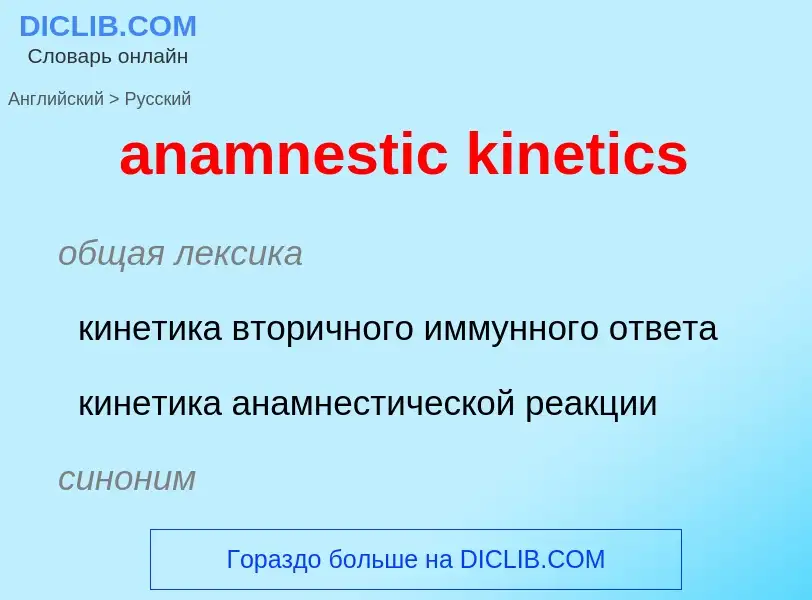Перевод и анализ слов искусственным интеллектом ChatGPT
На этой странице Вы можете получить подробный анализ слова или словосочетания, произведенный с помощью лучшей на сегодняшний день технологии искусственного интеллекта:
- как употребляется слово
- частота употребления
- используется оно чаще в устной или письменной речи
- варианты перевода слова
- примеры употребления (несколько фраз с переводом)
- этимология
anamnestic kinetics - перевод на Английский
общая лексика
кинетика вторичного иммунного ответа
кинетика анамнестической реакции
синоним
Википедия
In biochemistry, receptor–ligand kinetics is a branch of chemical kinetics in which the kinetic species are defined by different non-covalent bindings and/or conformations of the molecules involved, which are denoted as receptor(s) and ligand(s). Receptor–ligand binding kinetics also involves the on- and off-rates of binding.
A main goal of receptor–ligand kinetics is to determine the concentrations of the various kinetic species (i.e., the states of the receptor and ligand) at all times, from a given set of initial concentrations and a given set of rate constants. In a few cases, an analytical solution of the rate equations may be determined, but this is relatively rare. However, most rate equations can be integrated numerically, or approximately, using the steady-state approximation. A less ambitious goal is to determine the final equilibrium concentrations of the kinetic species, which is adequate for the interpretation of equilibrium binding data.
A converse goal of receptor–ligand kinetics is to estimate the rate constants and/or dissociation constants of the receptors and ligands from experimental kinetic or equilibrium data. The total concentrations of receptor and ligands are sometimes varied systematically to estimate these constants.

